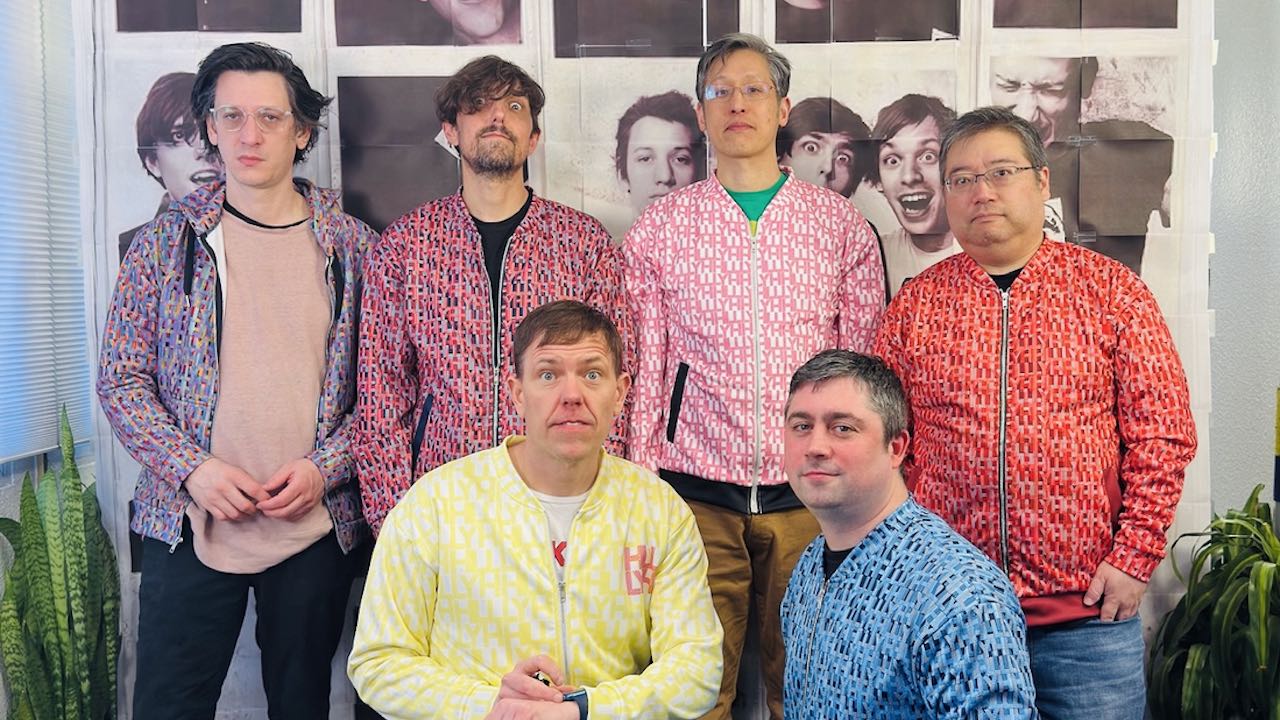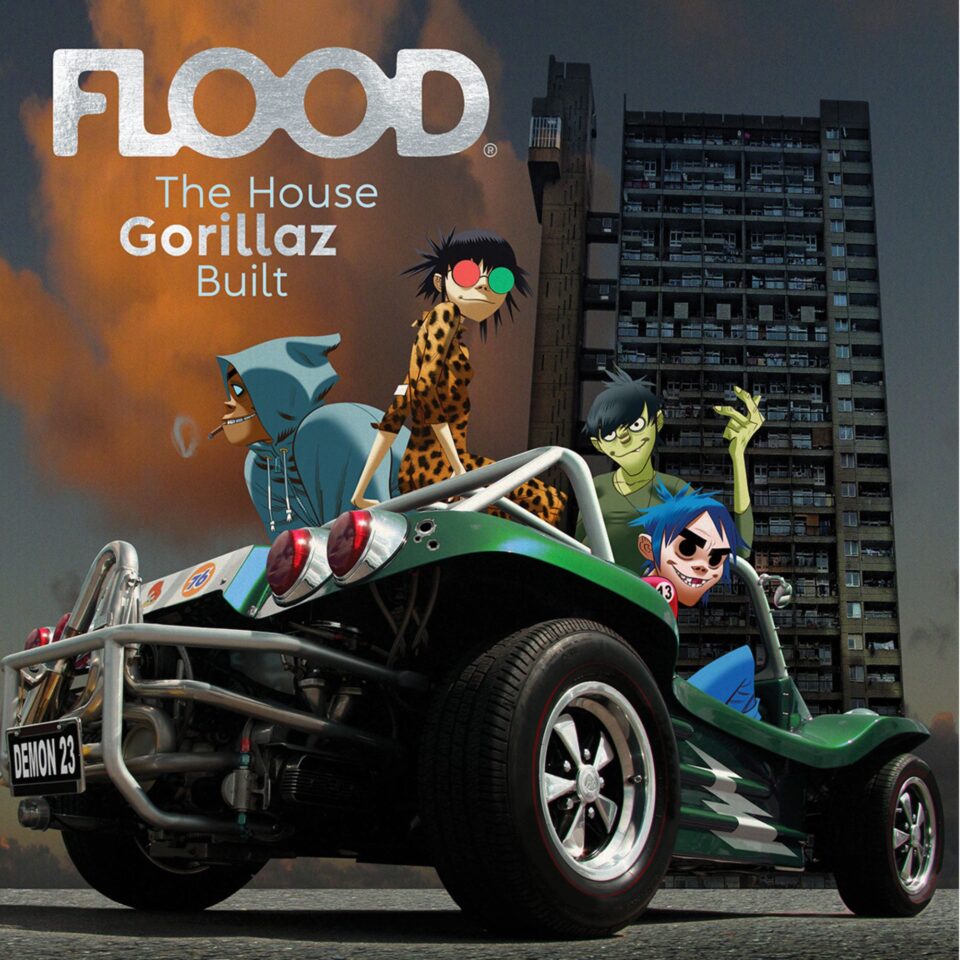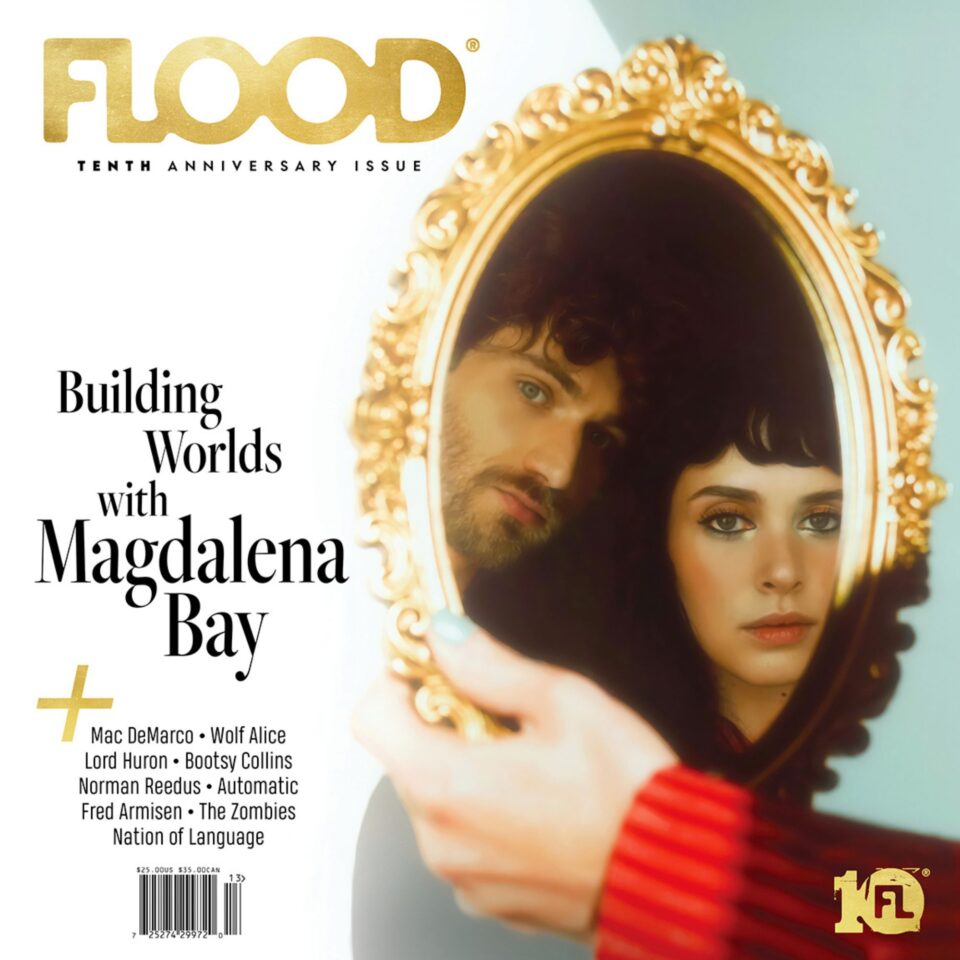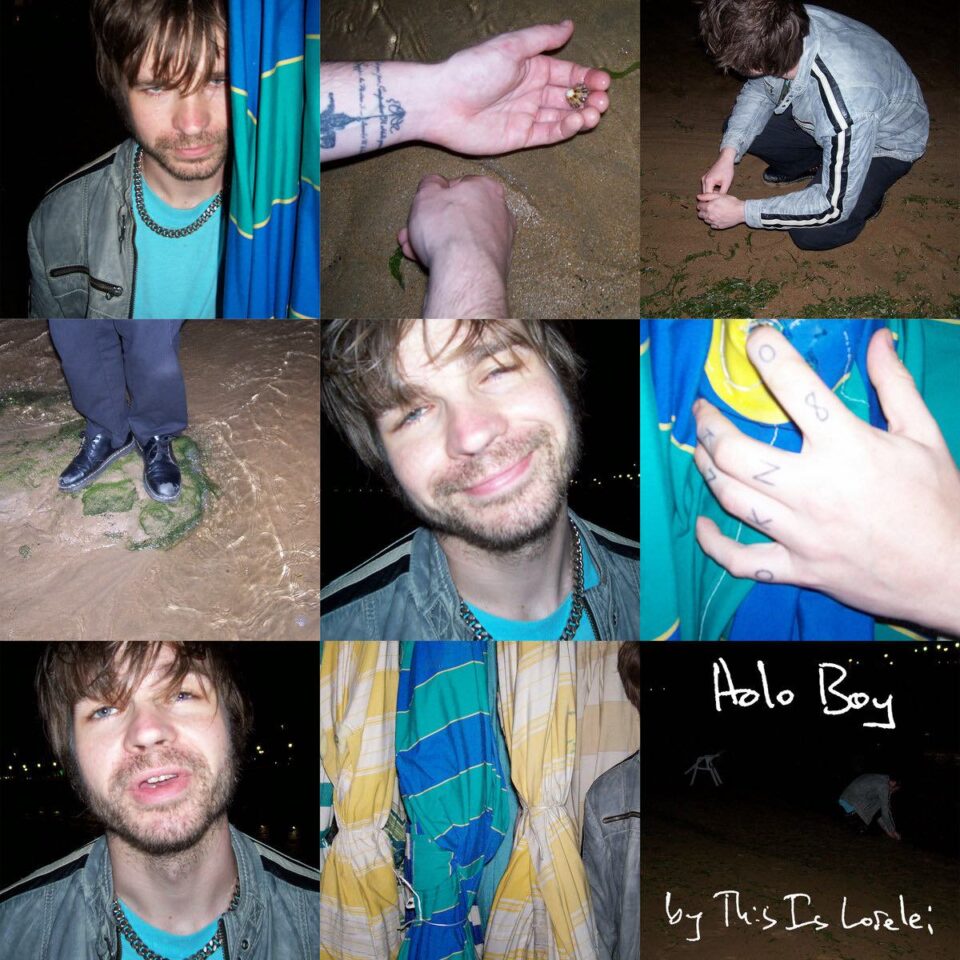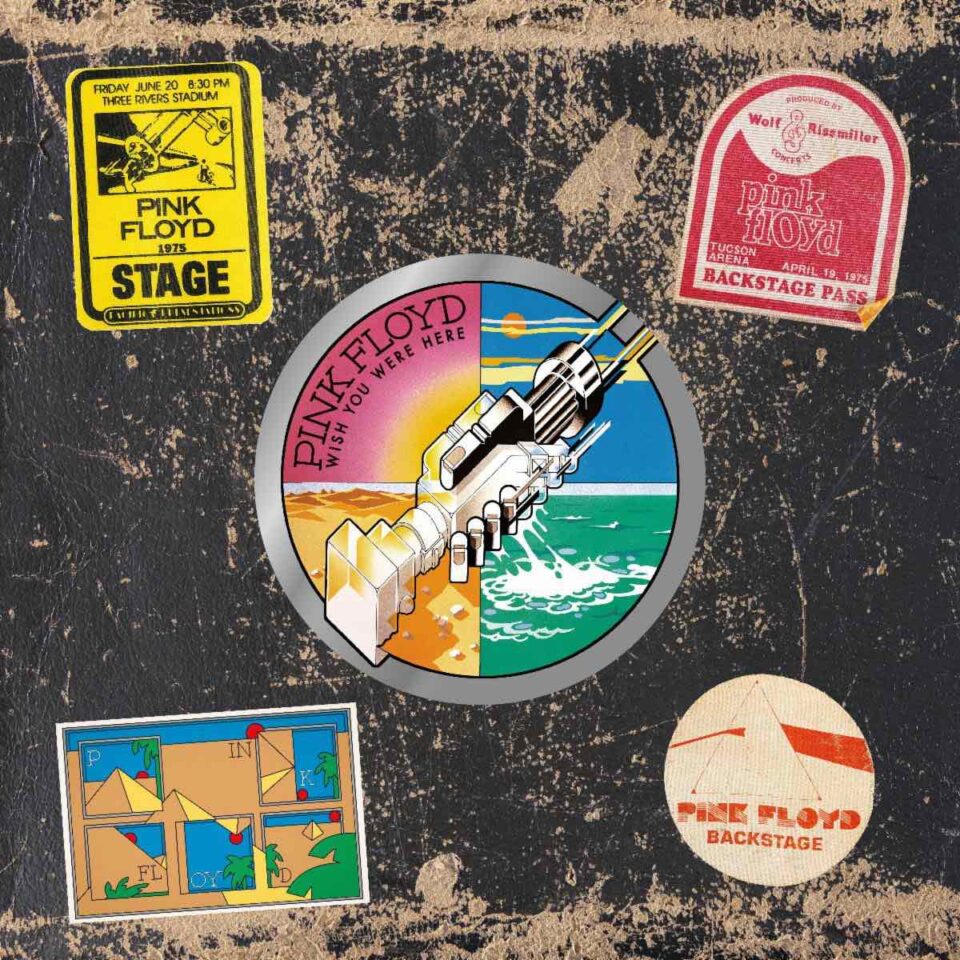The story of HLLLYH begins with the story of another band, The Mae Shi. The Mae Shi were a seminal part of the DIY art-punk scene that bubbled up in Los Angeles in the early to mid 2000s at venues like The Smell and The Echo (think No Age, Abe Vigoda, etc.). The group hit its commercial and critical apex with the sprawling, endlessly rambunctious and joyous HLLLYH, released in 2008. They had a messy breakup that ended with a confusing statement about who, exactly, was performing at Pitchfork Music Festival the following summer, but one thing was clear: After the gig, whatever people considered to be The Mae Shi would be done.
Fast-forward a decade and a half, and members of the band have reemerged as HLLLYH, a fitting reintroduction following their grand farewell. Bandleader Tim Byron set out to make one more Mae Shi record, but joined by Jeff Byron, Ezra Buchla, Brad Breeck, and Corey Fogel, the group found they had more to say than just an album’s worth of ideas. So, HLLLYH is the conclusion of one era, but it’s also the beginning of something entirely new. With their first effort under the new name, URUBURU, it’s clear that they’re building from where they left off, but with plenty of room to move the band into equally thrilling new directions.
To get further insight on the new project, we had Byron break down the album track by track—or stage by stage of the surrealist hero’s journey it follows. Stream along and find his words below.
1. “Uru Buru”
We had lofty goals for the album that became URUBURU. One goal was to make another “concept album” like HLLLYH, the final Mae Shi record—a record with a clear theme, and one that would reward listening from beginning to end. Another goal was to follow Joseph Campbell’s “hero’s journey” narrative cycle, in which a hero ventures from the ordinary world into the unknown, faces trials and transformation, gains wisdom or a boon, and returns home changed and empowered. We also wanted the album to interweave a few distinct narratives that coalesced differently depending on how closely you listened, like an audio version of Dali’s Lincoln in Dalivision. These goals required songs to hit the different beats of the hero’s journey—“refusal of the call,” “the innermost cave,” “resurrection”—and to link together musically and lyrically.
Through the album-making process, we stuck with these goals. “Uru Buru” is the album’s introduction, and it sets out the theme of the record: this is a song cycle about cycles. Because these songs are puzzles for the listener, we will be a little coy with each of our song descriptions. For this song, we will disclose that the word “uruburu” is not nonsense—it’s a word with a clear definition (to us) and etymological roots that go back 3,000 years. Plus, it’s a palindrome!
2. “Flexit Tagger”
This song got its start back in 2009, but was shelved when The Mae Shi broke up that year. We always knew this was going to be the first or second song on the record and ground the album in the “ordinary world.” The best songs mean different things from different perspectives. At one level, this song is inspired by the crowds at our shows in the late 2000s, particularly at LA venues like The Smell and Pehrspace and the early FYF Fests. Those Sparks-powered crowds were more powerful than we were. They could’ve overthrown the government. Relatedly, this song is also about overthrowing the government. Every rebellion looks foolhardy until it’s successful; this one looks very foolhardy.
3. “Evolver”
As a rule, The Mae Shi did not make “love” songs; plenty of other people are making great love songs. This is our attempt to break that rule and write a love song that’s authentic to ourselves. The Mae Shi did that on our first album with “Megamouth II,” which is a lusty song about a prehistoric shark. “Evolver” is a love song about two teenage monsters. It’s also about child neglect, incel culture, and the end of the world. It’s the “refusal of the call” song in the song cycle.
4. “(In Between)”
This is the “crossing the threshold” song in the hero’s journey. We’ve entered the spirit world. It’s also our rather ambitious attempt to keep several distinct storylines moving forward. One storyline seems to involve outer space.
5. “Yellow Brick Wall”
This song is about trying to have fun in the spirit world—trying to make the best out of a scary situation. Musically, this song was “written sideways” from the Annie Lennox song “Walking on Broken Glass,” which is an amazing song that should be in the Music You Hear at CVS Hall of Fame (with other greats like Sara Bareilles, Vanessa Carlton, and Natasha Bedingfield). There might be a little “Suffragette City” in there, too.
6. “(Goodbye, Yellow Brick Wall)”
This is a “travel further down the road” song. One clue to the lyrics: Per standard English grammar rules, the word “ram” in the phrase “charred Ram skeleton” should be capitalized. Ask yourself: When would that word need to be capitalized? When would its skeleton smolder?
7. “Trapped in the Song”
This is a very heartfelt song written shortly after the death of a family member who spent the last few years of his life completely trapped and isolated in vicious circles. A person who felt he needed to clean up his life and his house before he could make any plans or experience any joy, but was unable to clean up his life or his house. Is this a thing? We’re surrounded by people like this. But if this song sounds like a breakup song, that’s fine, too. As far as musical precedents, we like both Hall & Oates and David Berman. This song is the “approach to the innermost cave” song in the song cycle.
8. “(Failed Teste)”
Earlier in its development, this album was a 70-minute slog that really went deep to the spirit world. We wanted the album to emulate a bad acid trip and basically melt into goo in the middle. We would synthesize ego death by having songs stray further and further from pop structures and having lyrics get more and more oblique. This version of the album included songs in the style of the opening and closing themes to an imagined 1980s sitcom called “Pray for the Jackal” and a 12-minute techno descent into madness called “The Ordeal.” There was a song sung by time-traveling aliens. We played it for friends and family and everyone told us it was terrible. And they were right—it wasn’t the right album for a band returning from a 15-year absence. So we scaled things back and cut about 20 minutes of face-melting weirdness. “Failed Teste” is what was left—the vestigial remains of a bad drug trip.
9. “S.O.S.O.S.O.S.”
This song is about meeting the devil. The narrator is the devil. There should be more songs narrated by the devil. There are messages in this song that are not in English or any other spoken language.
10. “Killer on the Edges”
This album was designed to have two sides, with side one ending at the lowest point and side two returning from that low point. This song starts side two. We also wanted to tie all the songs on side two of the record together, á la Abbey Road, and be a “road back” of sorts. This a “jailbreak” song. We’ve suffered ego death in the spirit world and have completely lost hope, but then we catch a break. Life can be a prison filled with endless cycles, but every now and then someone leaves the prison door unlocked. This feels magical, but in reality it happens just because it’s hard to keep people oppressed. Evil is hard work. I love how in many David Lynch works, evil isn’t overcome by good—it just thwarts itself (e.g., Windom Earle, Evil Dale Cooper). Fiction writers look at deus ex machina as a copout, but it’s something we experience all the time in our daily lives. Here, our hero has been trapped in the spirit world so long that the “normal” world is a faint memory. But one day, nobody’s minding the phone taps or watching the checkpoint, and it’s time to run.
11. “(Guess Who’s) Back From the Spirit World”
After the “jailbreak” song comes the “I’m back” song. These lyrics aren’t nonsense, but it’s fine and healthy to treat them like nonsense. This song is our ignorant, funhouse-mirror take on Martin Buber, G.I. Gurdjieff, and other philosopher types we’ve dabbled with over the last few decades. In short, the meaning of life is written in the moments you experience with other people. Those moments are the true units of human existence. Secret knowledge has been passed on for thousands of years by being coded into our dances, our recipes, our greetings, and our holidays.
At this point, can I just pause to say it’s sad that the right in America now has a monopoly on good old fashioned crackpottery? Conspiracy theories used to be fun and playful. We long for a day when they can be playful again.
12. “Black Rainbows”
The idea here was to take the classic “:et’s get out of here, you and me” song (e.g. “Two Tickets to Paradise,” “I’ll Take You There,” “Born to Run,” “Fantastic Voyage”) and turn it upside down. Also, we miss mid-2000s dance punk. That music never got fully digested by the monoculture, never got memeified. It’s cool that Gen-A kids at some point will stumble across Klaxons or Liars (or The Mae Shi?) and have that music completely unspoiled by pop culture references.
13. “Endless High Five”
We’re from California. High fives and daps are sacrosanct. They cross generational lines—you can dap up a grandfather and high-five a toddler. Dogs can learn to high five. High fives require a certain amount of faith—you don’t want to be left hanging. But they’re awesome, and that split second of human contact in a high five is a brief moment where two humans become a single new thing. So the “endless high five” is a powerful zen koan for us.
This song is also about the magic of the clear night sky. When you’re growing up around Los Angeles, you don’t see the stars. Maybe once in a while you can make out Orion’s Belt. Then one day you go camping somewhere hours and hours away from the city and look up at the sky on a cloudless, new-moon night and see the Milky Way for the first time and it changes you. I remember thinking that the “Milky Way” was just some abstract concept, a metonymy for “our part of the universe”—like “Wall Street” or “the White House.” It’s a real thing!
Mainly, however, this song is about brotherly love—the “come here, bro” love that people of all genders deserve to experience. That’s why we got our friends and tour buddies Rapider Than Horsepower and Yea Big + Kid Static to reunite and write and perform the song with us.
14. “Dead Clade”
This is our attempt to stick the landing on our whole ambitious concept album idea and tie a lot of things up. Someone on Reddit referred to The Mae Shi song “HLLLYH” as a “tell me how to live” song. This is also that kind of song. It takes shamelessness to make this kind of song, and we accept the challenge. “Dead Clade” will not be our last “tell me how to live” song. This song accepts the fact that humankind is absolutely doomed. We are a wildly invasive species that’s guaranteed to kill our planet. How are we supposed to live knowing that? This song provides the answer. Maybe, just maybe, there’s a way to break the cycle. Maybe, just maybe, there’s a way to reverse the cycle.
15. “I’m Glad You’re Alive”
URUBURU is an album that goes in a circle, but this song exists outside that circle. It’s the tail on the letter Q. A vestigial appendage. An exit ramp. This song is about the beauty and magic of small moments with friends. It’s also a “don’t kill yourself” song, which is a genre of songs that actually exists. It’s for all the people we love who’ve shared their suicidal ideations with us. This song is unusual in that it was inspired by a T-shirt. Sometimes we work really hard on songs. We write them and rewrite them. We put them away for months or years and return to them. We scrap them if we can’t get them to work. This song is not one of those songs. It was delivered to us fully formed; it went from song idea to completed song in minutes.

